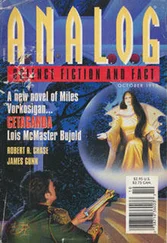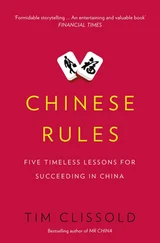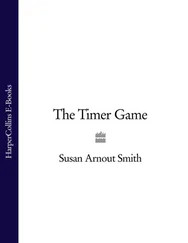Tim Gunn - Gunn's Golden Rules
Здесь есть возможность читать онлайн «Tim Gunn - Gunn's Golden Rules» весь текст электронной книги совершенно бесплатно (целиком полную версию без сокращений). В некоторых случаях можно слушать аудио, скачать через торрент в формате fb2 и присутствует краткое содержание. Город: New York, Год выпуска: 2010, ISBN: 2010, Издательство: Gallery Books, Жанр: Психология, на английском языке. Описание произведения, (предисловие) а так же отзывы посетителей доступны на портале библиотеки ЛибКат.
- Название:Gunn's Golden Rules
- Автор:
- Издательство:Gallery Books
- Жанр:
- Год:2010
- Город:New York
- ISBN:978-1-4391-7656-6
- Рейтинг книги:4 / 5. Голосов: 1
-
Избранное:Добавить в избранное
- Отзывы:
-
Ваша оценка:
- 80
- 1
- 2
- 3
- 4
- 5
Gunn's Golden Rules: краткое содержание, описание и аннотация
Предлагаем к чтению аннотацию, описание, краткое содержание или предисловие (зависит от того, что написал сам автор книги «Gunn's Golden Rules»). Если вы не нашли необходимую информацию о книге — напишите в комментариях, мы постараемся отыскать её.
Gunn's Golden Rules — читать онлайн бесплатно полную книгу (весь текст) целиком
Ниже представлен текст книги, разбитый по страницам. Система сохранения места последней прочитанной страницы, позволяет с удобством читать онлайн бесплатно книгу «Gunn's Golden Rules», без необходимости каждый раз заново искать на чём Вы остановились. Поставьте закладку, и сможете в любой момент перейти на страницу, на которой закончили чтение.
Интервал:
Закладка:
My big macho FBI-agent father, George William Gunn, was J. Edgar Hoover’s ghostwriter, and he not entirely happy about the oddness of his only son. He coached the Little League team and did everything he could to get me on a sports field. It was a disaster. I was bullied. I was beaten up.
Looking back, it seems like having a tough-guy father would have been helpful, but the truth was, he really never seemed to understand me, so we never had much of a relationship. And oddly enough, even when he knew I was getting pummeled at school, he didn’t teach me how to fight back. He never once said, “Let me show you how to sock someone.”
The result was that I was a terrible fighter. I thought I was going to be a concert pianist (yes, I was every kind of nerd), so I would not hit for fear of breaking a hand. That meant I was a biter and a hair puller. If you got into a tangle with me, that’s what would happen. You’d get bitten and have your hair pulled. I wouldn’t even know what I was biting. I would just be in a frenzy, biting anything I could get a hold of.
An interviewer once asked me, “Who would win in a fight, you or Michael Kors?”
“Oh, that’s easy: Michael Kors,” I said. “Because I’m a hair puller, and he barely has any hair. There’s not enough to hold on to.”
When I was older and had to declare a sport, it was swimming. I loved swimming primarily because it’s solitary—that and you don’t sweat. (My sense of propriety was off the charts even back then.) Furthermore, I was good at it, especially the breaststroke and backstroke. In an unexpected and extremely appreciated show of support, my father took up coaching the swim team.
So I had swimming and my grades to be proud of. I also had the piano, which I studied for twelve years and became quite good at, but there was no reason to share that tease-worthy tidbit with my classmates. And yet, I was flailing. What was I going to be truly good at? What would it take to prove to my peers that I did in fact have value other than as a punching bag? For a long time I had no idea.
My teaching career began in an innocent enough way. When I was twenty-five years old, a former and much beloved teacher, Rona Slade, invited me to be her teaching assistant for a summer course for high school students at the Corcoran School of Art (now the Corcoran College of Art), one of the nation’s last remaining museum schools and my alma mater (class of ’76).
They really care about craft there. The Pre-College Intensive Workshop met six hours a day, five days a week, for a month. Rona and I had a great time and played off each other well. I felt proud that I could help someone for whom I had so much respect.
At that point I was a financially strapped sculptor who made ends meet by building models for architecture firms in Washington. Although I enjoyed model making, it wasn’t very lucrative when one factored in the vast amount of time required to make each model. I was probably making about a dollar an hour.
But I loved sculpture. One of my favorite artists is the sculptor Anne Truitt. When I first saw her work in 1974, I was transformed. It was like the first time I saw a painting by the abstract expressionist Mark Rothko. I felt physically lifted off the ground. I’ve always thought the reason Truitt wasn’t as well known as she deserves to be is that she doesn’t easily fit into any particular genre—neither in the Washington Color School nor the Minimalists. There’s not a box to put her in, so she gets lost. I was so lucky later to study under her and then to speak at the opening of her posthumous retrospective at the Hirshhorn Museum and Sculpture Garden in 2009.
In any case, when Rona asked me to stay on at the end of the summer of 1978 to work at the college, I jumped at the chance. The position would include teaching a three-dimensional design course as part of the first year of studies. Furthermore, it was full-time, which meant that it came with benefits. Even better, it paid a whopping $6,000 per academic year. Needless to say, I was ecstatic.
But then, when it got closer to my start date, I was terrified.
I realized I had no idea how I would fare in the classroom without Rona at my side. Would I be teased as I had been in grade school? Would the students throw paper planes and spitballs? Would they tie me up and hurl me out the window and into the parking lot? The more I thought about it, the more gothic the scenarios became, and the more I was struck mute and paralytic with terror.
Attempting to drive to work on that first day, I found that I was incapable of pushing down on the accelerator. I sat for a good ten minutes or so before I rallied sufficiently to get the car to move. When I arrived in the school’s parking lot, directly across the street from the White House, I got out of the car and … promptly threw up on the asphalt.
Ah, the dawn of a glorious career, I thought, vomiting in front of my new place of employment.
I washed up and walked dizzily into my classroom to greet my new students. I found that the only way that I could appear to be even remotely composed before them was to stand with my back braced against the blackboard, because my knees were shaking so badly that I knew I would topple over without the wall’s support.
I would like to tell you that the next day was better and that the day after that was better still, but that would be a lie. This same horrible scenario of fear and sickness was repeated for several days in a row.
Finally, I gathered up enough courage to share my terror with Rona. I was sure she would tell me I should quit immediately. But instead, she said very matter-of-factly with her Welsh accent, “Oh, I’m familiar with this malady. It will either kill you or cure you. I’m counting on the latter.” And she smiled tenderly, my very own Florence Nightingale!
Indeed, it cured me—eventually—and I was able to make it through the year without dying or passing out in front of my class. And the students didn’t throw airplanes or hurl me out the window. From then on, I was even able to keep down my breakfast. Talk about make it work !
I’m not built to be a public persona, but through sheer force of will, I’ve made myself step up to the plate. I’m really fortunate. I had parents who believed in education and a mother in particular who nurtured and fostered culture in our home. She wanted her children exposed to as much as possible. We went to museums all the time. We read books. I wasn’t born with a silver spoon in my mouth, but I was extremely lucky, because in our home education and exposure to culture were everything. Either one can help you through life.
Everything got better when I became a teacher. I found an apartment and moved out of my parents’ house. I was part of a new community and made new friends.
The only sad thing was giving up my sculpture studio, which I’d long shared with the painter and my dear friend Molly Van Nice. In fact, I gave up sculpture altogether. I thought I was going to miss it, but I found that the teaching experience was creative in its own way. It was so thoroughly satisfying and rewarding that I no longer felt the need to make my own artwork.
Within the hallowed walls of the distinguished institution in which I worked, it was the precedent that one practiced what one taught. Rona did not. She had been a textile artist, but she was no longer engaged in that work. I decided to embrace her as my role model, and even though my not being a practicing artist or designer raised some eyebrows, I thought: I’m not apologizing for this. And I’m not pretending that I’m doing something that I’m not. Besides, I can always return to sculpting if I hear the call. It’s not going anywhere.
One spectacular experience from my time teaching at the Corcoran was a classic “make-it-work” moment. In late October 1979, the school received a call from the White House requesting that our students make original ornaments for the Christmas tree in the Blue Room. The president at the time was Jimmy Carter.
Читать дальшеИнтервал:
Закладка:
Похожие книги на «Gunn's Golden Rules»
Представляем Вашему вниманию похожие книги на «Gunn's Golden Rules» списком для выбора. Мы отобрали схожую по названию и смыслу литературу в надежде предоставить читателям больше вариантов отыскать новые, интересные, ещё непрочитанные произведения.
Обсуждение, отзывы о книге «Gunn's Golden Rules» и просто собственные мнения читателей. Оставьте ваши комментарии, напишите, что Вы думаете о произведении, его смысле или главных героях. Укажите что конкретно понравилось, а что нет, и почему Вы так считаете.











